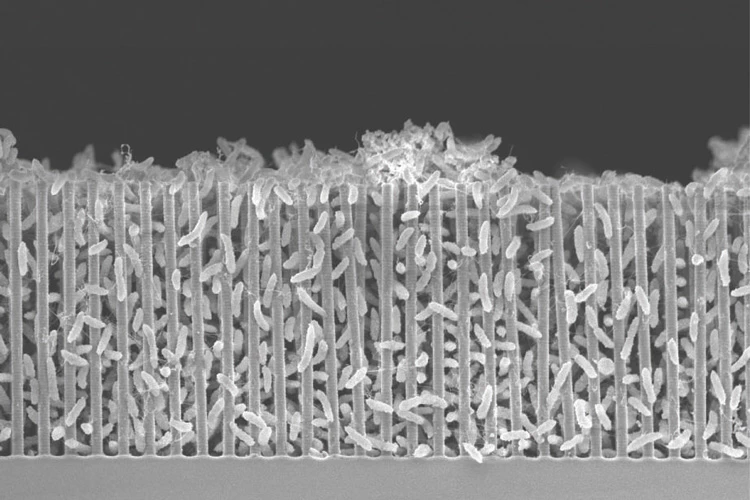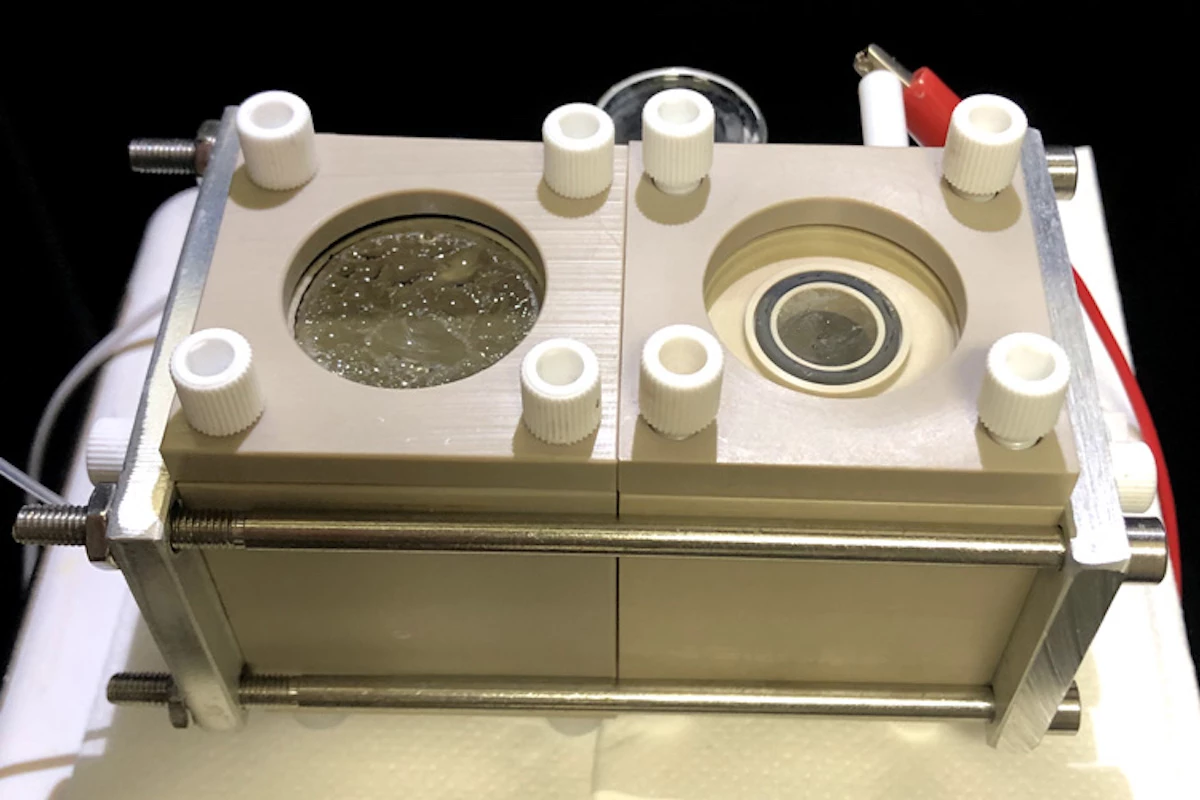Were humans to one day make it to Mars, one of the problems we’d need to have solved long in advance is how to produce necessities like fuel and drugs without having to take them there ourselves. One way we could do this is by collecting carbon dioxide from the Martian atmosphere and converting it into versatile building blocks for organic compounds. Scientists at the University of California, Berkeley have developed a reactor that can do just that, using a mix of bacteria and a forest of nanowires to make these conversions with what they claim is record efficiency.
The team’s reactor works on a similar premise to the natural process of photosynthesis, whereby plants draw on sunlight to transform carbon dioxide into sugars they can use for energy. The system borrows a little from nature, too, relying on water and Sporomusa ovata bacteria packed in amongst a forest of nanowires to drive the conversions.
These silicon nanowires are one-hundredth the thickness of a human hair and act as the system’s solar collector. By absorbing light, generating electrons and palming them off to the bacteria living amongst them, the nanowires feed a chemical process whereby the bacteria convert carbon dioxide and water into acetate and oxygen.
“These silicon nanowires are essentially like an antenna,” says project leader Peidong Yang. “They capture the solar photon just like a solar panel. Within these silicon nanowires, they will generate electrons and feed them to these bacteria. Then the bacteria absorb CO2, do the chemistry and spit out acetate.”

On Mars, the acetate molecules could act as building blocks to produce organic molecules for fuel, plastic or drug production. The oxygen that's released, meanwhile, could be used to help settlers keep their artificial atmospheres at an Earth-like 21-percent oxygen.
The team actually revealed the first version of its biohybrid reactor five years ago, which offered a solar conversion efficiency of around 0.4 percent. This was on par with many plants, but the team held aspirations of improving the performance so that it rivaled the very best nature has to offer, which they say is sugar cane with a conversion efficiency of four to five percent.
In the time since, they have made tweaks to the system that helped to maintain the acidity of the water in the reactor, which stopped the bacteria from detaching from the nanowires as the pH of the surrounding water increased and allowed for more bacteria to be packed into the forest. While the current prototype of the system requires an external solar panel to provide it with energy, this enabled the team to increase the performance of the system to a record 3.6-percent conversion efficiency.
The scientists say a real-world version, however, would have the silicon nanowires act as the solar panels. They are now working to further improve the efficiency of the system, and are investigating how genetically engineered bacteria could be used to produce a wider range of organic compounds.
“On Mars, about 96 percent of the atmosphere is CO2,” says project leader Peidong Yang. “Basically, all you need is these silicon semiconductor nanowires to take in the solar energy and pass it on to these bugs to do the chemistry for you. For a deep space mission, you care about the payload weight, and biological systems have the advantage that they self-reproduce: You don’t need to send a lot. That’s why our biohybrid version is highly attractive.”
Yang is also working on similar systems that would instead use sunlight and CO2 to produce sugars and carbohydrates, which could potentially be used by Mars colonists for food. And in addition to the potential for such technology on Mars, the biohybrid reactor technology could also be used here on Earth to help fight climate change by making organic compounds while pulling CO2 from the atmosphere.
The team published its research in the journal Joule.



